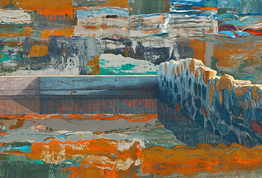Paul Stopforth
Artist Statement:
In 2004 while teaching in the Visual and Environmental Studies Department at Harvard University I spent 2 weeks in the summer as the artist-in-residence on Robben Island. The island is a low-lying outcrop of rock barely 8 miles from the South African mainland and the city of Cape Town. It may be the most significant historical site in South Africa as it paradoxically symbolizes the repressiveness of the apartheid state and the strength of those who opposed it. The role of the island is well known as the political prison in which Nelson Mandela was held along with others who were considered to be dangerous to the social order.
Robben Island was put to many uses over the last 500 years; it functioned as a pantry, a hospital, a leper colony, a mental asylum, a military camp and a prison. Ambiguous and contested histories continue to fascinate me, and various relics that I came across during my residency have become icons that I turn to as triggers of meaning in my work.
During the late 19th century Robben Island housed a leper colony. The tidal pool called ‘Bethesda’ (place of healing) that is a central image in this body of work was believed by the woman lepers to have healing properties and they bathed in its copper colored water.
The 3 paintings that refer to this site are the culmination for me of many images that have reflected on history, memory and loss.
After many years I have begun in my most recent paintings to sense a tentative connection that bridges the southernmost tip of Africa with the East Coast of America. From the tidal pool called ‘Bethesda’ situated at the rock strewn sea edge of Robben Island, to the ‘Breakwater’ in Provincetown I have begun to paint a fragmentary thread.
Paul Stopforth




